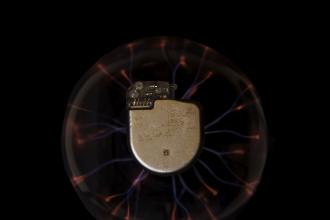The unique EMR needs of various specialties and subspecialties
In the May issue (BCMJ 2009; 51:154) we explored the broad electronic medical record (EMR) requirements of specialists, noting that it is typical that 95% of the functionality is the same between EMRs for all specialties. However, the primary benefits and emphasis of various aspects of the EMR shift depending on the specialties and subspecialties along continuums, as illustrated in the Figure.
Continuum one
Surgical specialties The focus for surgeons is typically on efficient front-office workflow, efficient and effective review of referral and pre- and postsurgical data, and coordination of OR booking. The software requirements are therefore typically focused primarily on front-office functionality (e.g., billing and scheduling), receipt and review of referrals (e.g., e-faxing), dictation and transcription, interfaces with diagnostic facilities, and printing or faxing of OR booking forms that are prepopulated by the EMR. Most surgeons do not maintain comprehensive patient histories or use sophisticated templates for documentation.
Longitudinal care subspecialties At the other end of the continuum are a number of specialties that typically have more longitudinal relationships with their patients (e.g., pediatrics, rheumatology, and endocrinology). These specialties typically make more extensive use of EMR functionality, including templates and decision-support tools. They are more likely to maintain a complete chart including full problem and medication lists. The value of a full EMR for these specialties is high, particularly because the EMR becomes an integral tool in the tracking and monitoring of patient history, goals, and outcomes over time, and the referral/consult workflow can be significantly enhanced.
Episodic care subspecialties A number of subspecialties of internal medicine fall between the two extremes on this continuum (e.g., neurology and urology), usually involving a consult visit and one or two follow-ups. There is heavy emphasis on efficient review of significant amounts of referral and diagnostic data, and usually less entry of data by the physician. These medical specialties typically share similar benefits and EMR needs with surgeons; however, some specialists in this category may wish to use more sophisticated tools to capture consult notes in a highly structured template form that can then be used to prepopulate a draft consult letter, thus gaining efficiency in the consultation process and enhancing the resulting consult letters.
Continuum two
Psychiatry Due to the nature of the practice (e.g., role of the local and provincial health authorities, nature of patient-provider communication), psychiatrists have traditionally not been as quick to take up EMRs. They typically have the same fundamental underlying need for billing and scheduling, receipt of referrals, and production of a consult letter as others, but that consult letter is typically dictated rather than created using a structured template, and they do not typically capture their notes in the EMR during the visit.
Ophthalmology Ophthalmologists generally see very high value in EMRs due to the nature of the data they collect and how those data are created and used, but have had spotted history in this pursuit due primarily to the complexity of integrating the EMR with the diagnostic devices in the office, the role of documentation templates, the need for sophisticated drawing tools, and the related costs of this extensive functionality. Some ophthalmologists use heavily customized generic EMR products with added templates and drawing tools, but with limited or no interfaces. Others have pursued ophthalmology-specific products that have prebuilt interfaces, templates, and drawing tools, but they have traditionally not had all required BC-specific functionality such as MSP billing. PITO is working closely with the BC Society of Eye Physicians and Surgeons and a very interested group of ophthalmologists in this regard.
Continuum three
Highly hospital-oriented specialties A subset of specialists from a variety of specialties (e.g., gastroenterology and cardiology) have exceptionally close involvement with the hospital, including regular on-call coverage, a broad hospital-based care delivery team, and performing diagnostic services. Many use the hospital’s patient care information system for a majority of their care and consider it sensible to use the same system for the remaining aspects of their care. PITO is working with a number of these specialists, the regional health authorities, and the PITO Steering Committee to investigate these opportunities. Please check the PITO web site at pito.bc.ca/specialists for full details.
—Jeremy Smith
Program Director, PITO

